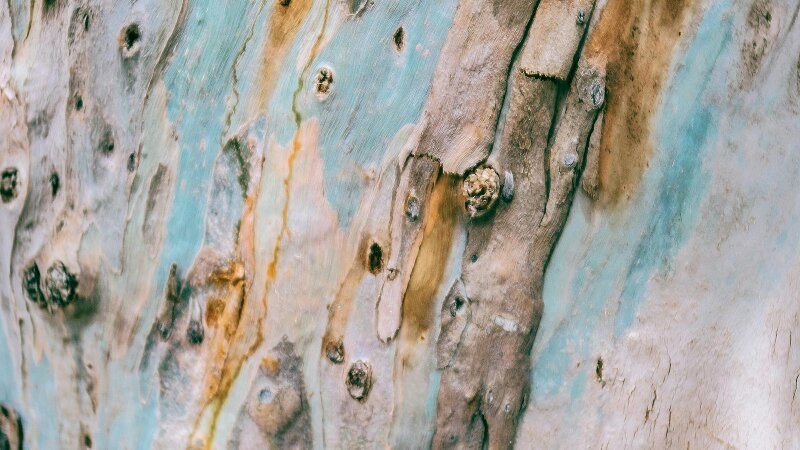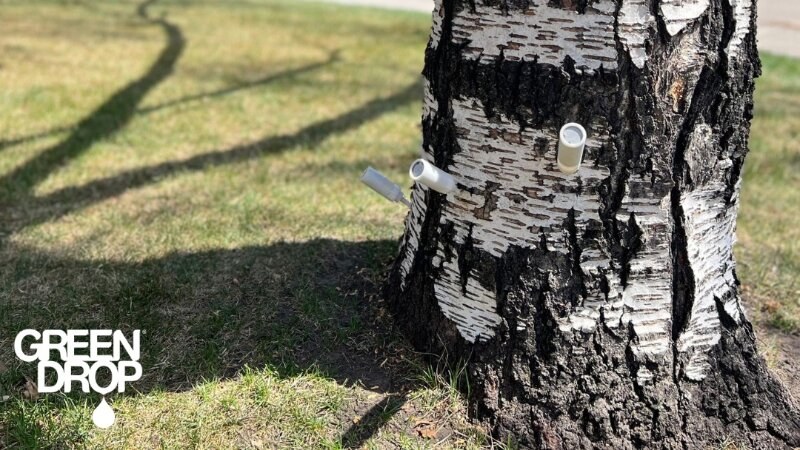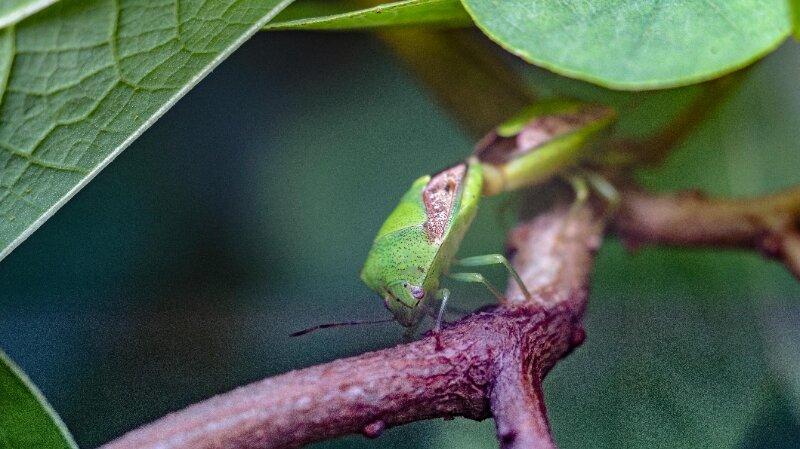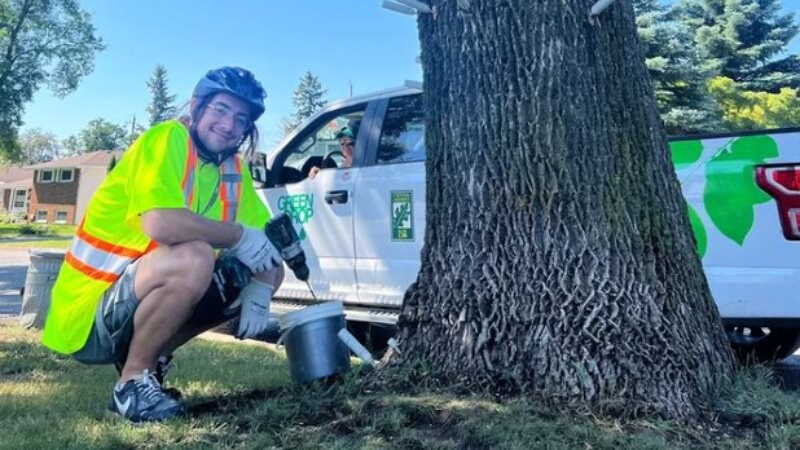Fungus or Disease? How to Spot the Difference And Cure It
Reading time: 8 minutesTrees play a critical role in the ecosystem, but even they aren't immune to the many challenges that nature can present. Just beneath the surface, a silent struggle unfolds between trees and hundreds of microorganisms, threatening the health and vitality of these important environmental companions.
Understanding tree health and distinguishing between common diseases is essential to protecting tree species across Western Canada and ensuring their presence for future generations.
Below, we go over the six primary causes of tree disease and death, how to tell the differences between them, and where you can learn more.

1. Fungal Infections
Fungal infections are by far the most common culprits of diseased trees, with more than 300 species of fungi in Western Canada alone, according to the Canadian Forest Service.
Fungi typically enter trees through wounds, openings, or even tiny cracks in the outer bark. The infection may be very obvious in some cases, resulting in wilting leaves, discoloured bark, and visible decay. However, many fungi cause damage below the surface and only show symptoms when the tree is past saving.
Here are some of the most common tree diseases and how you can identify them:
Butternut Canker
Butternut canker is a fungal disease that typically only affects white walnut trees. As these fungal spores spread to trees through wind and rain, they can take root in trees with pruning wounds, storm damage, and other entry points. Once a tree is infected with the fungus, there are few options for treatment. Trees with butternut canker need to be removed and destroyed to prevent the disease from spreading to nearby trees.
Dutch Elm Disease
Dutch elm disease (DED) is another destructive wilt disease that affects the vascular systems of elm trees. This condition is caused by the Ophistoma novoulmi fungus, which is carried by elm bark beetles. Trees with DED typically exhibit discoloration, wilting, and yellowing of the leaves.
As the disease progresses, the tree declines rapidly, and once infected, it has little chance of survival. DED can spread quickly through root grafts to other elm trees and requires swift management of diseased trees.
White Pine Blister Rust
White pine blister rust is a common but highly destructive Canadian tree disease. It affects only certain species of white pine, including the sugar pine and the Eastern white pine. While the fungus can't spread between pines, it can spread via wind from pine to a currant or gooseberry shrub and then to another pine. This makes the condition especially difficult to control.
Symptoms of white pine blister rust include cankers on the branches and trunk with a distinctive orange colour. You may also see wilting, needle yellowing, and tree death. Management of this disease generally involves removing infected trees and proactively removing alternative host shrubs.

2. Bacterial Infections
Bacterial infections pose another microscopic threat to trees in Canada and can often be even more challenging to detect than fungus. Bacteria work within the tree's internal vascular system to hijack the flow of water and nutrients so it can replicate and spread. This seriously impacts the tree's ability to function and complete critical processes like photosynthesis, carbon dioxide absorption, and oxygen exchange.
Watch out for these common bacterial tree infections in Canada:
Bacterial Cankers
Bacterial cankers can usually be identified by the characteristic sunken, darkened lesions on the trunk, branches, or other parts of the tree bark. If not promptly treated, these cankers can cause the surrounding tree to become necrotic, causing wilting, defoliation, and dieback.
Prevention is the best course of action, and making sure tree-cutting tools are sanitary before using them is paramount. Fortunately, bacterial infections may be managed by removing the affected branches, leaving the remainder of the tree intact.
Crown Gall
Crown gall is a serious disease that causes the formation of tumour-like growths on the trunk and branches. Not only does it affect trees in Western Canada, but it can also spread to shrubs and other woody plant species.
Crown gall is usually easy to spot by the round areas of swelling on the tree's outer bark. Almost always, this disease is transmitted by pruning wounds and uncontrolled insect infestations. After an infection, affected trees typically must be removed to reduce spread.
3. Tree Viruses
Tree viruses are less common than fungal and bacterial infections but can be equally serious. Viruses primarily spread to trees by contaminated cutting tools, and the symptoms vary widely. Trees may exhibit stunted growth, leaf discoloration, or even necrotic lesions in the bark, which affects the tree's structural integrity and puts its survival at risk.
These viruses are most common among fruit trees in Canada:
- Cherry Rasp Leaf Virus
- Apple Russet Ring
- Apple Green Crinkle Virus
- Apple Stem Pitting Virus
- Tomato Ringspot Virus
- Tobacco Mosaic Virus
- Tomato Mosaic Virus
4. Nematodes
Nematodes are microscopic roundworms that live in the soil and may seriously threaten tree species. Many nematodes in Canada benefit trees by helping them move nutrients about and reducing the presence of pests that lay their eggs in the ground. On the other hand, harmful nematodes can weaken trees before showing any signs of infestation, allowing other pathogens, fungi, and bacteria to enter the tree as well.

5. Insects
Tree-damaging pests can wreak extreme havoc on bark and foliage, boring through the wood and consuming leaves faster than the tree can replace them. When left untreated, this can result in extensive damage, weak trees, foliage loss, and even tree death.
Knowing which tree pests to look for and how to mitigate them is crucial for developing effective management strategies. These insects are common in Canada and can critically compromise the health of your trees:
Mountain Pine Beetle
According to the Government of Canada, the mountain pine beetle has been ravaging forests in British Columbia since the early 1990s and has infiltrated over 18 million hectares of forest, now posing a threat to northern Alberta.
Under normal circumstances, healthy trees can resist these invasive beetles by producing toxic sap. But as trees become overwhelmed with large swarms of beetles, their defences are overwhelmed, and the beetles can damage the tree faster than the tree can ward them off.
Emerald Ash Borer
Ash trees are also at risk of the infestation of emerald ash borers, a native Asian beetle found in North America in the early 2000s. Now, the metallic green beetle poses a significant threat to native ash trees in Western Canada as it destroys the protective bark of trees and damages the vascular system. This almost always results in tree death, so proactive pest management is critical for valuable ash trees.
6. Combination Tree Diseases
Some tree diseases result from a “perfect storm,” when a combination of factors work together to introduce less common but more complex conditions. Since these diseases have multiple causes, multiple types of treatment may be needed, and they may be particularly stubborn to get rid of. This includes conditions like:
Beech Bark Disease
The Invasive Species Centre of Canada reports that in 2017, Ontario joined northern Ohio in a rapidly expanding Beech Leaf Disease (BLD) outbreak that began in 2012. While certain species of nematodes have been linked with BLD, research suggests that these organisms are unlikely to be the only vector of the disease.
The leaves of infected trees may look similar to other conditions like blight or anthracnose, making it harder to differentiate this infection from others. Look for “striping” on the leaves, where the veins have started to become darker than the rest of the leaf.
Oak Decline
Oak decline is a complex and critical tree disease that specifically impacts different oak species. Multiple factors, including pathogen exposure, insect activity, and environmental stress, cause this condition. In most cases, a specific bacteria called Xylella fastidiosa is present. However, not all trees that have it will exhibit oak decline.
Keep an eye on oak trees that have suffered prolonged drought or are in poor soil conditions since this can make them more susceptible. Ensure you're proactively addressing the underlying factors of oak decline instead of waiting for problems to occur. Adhere to proper tree watering schedules and use preventative insecticides and fungicides to reduce the risk of infection. Always sanitize tools before you use them and in between each tree.

Learn More from the Certified Tree Arborists at Green Drop
At Green Drop, our certified tree arborists have extensive knowledge of different tree health conditions and how fungi, viruses, and other pathogens affect the well-being of Canada’s tree populations.
If you’re in Winnipeg, you can take advantage of our brand-new Plant Disease Diagnostic Laboratory, where we use state-of-the-art technology and international protocols to ensure reliable analysis.
Visit our learning center today to discover more about tree diseases to watch out for and see how a trusted tree removal company like Green Drop can help you protect the health and vitality of your trees for many years to come.

